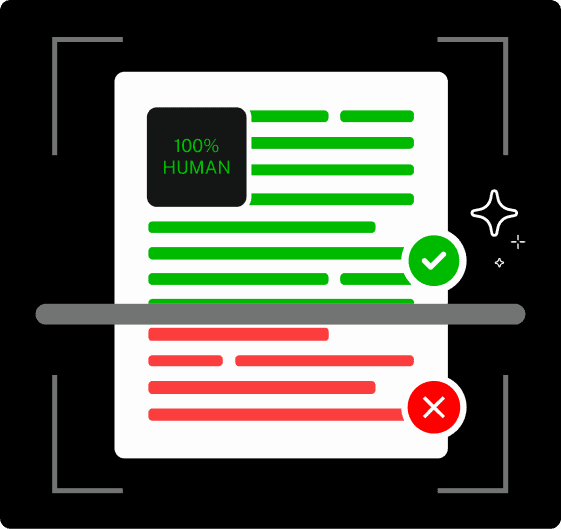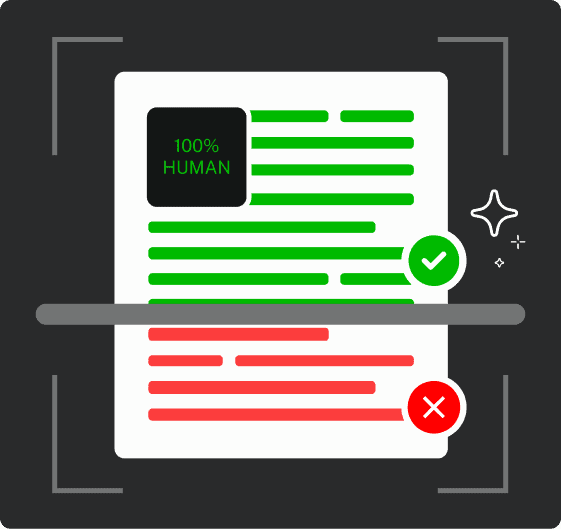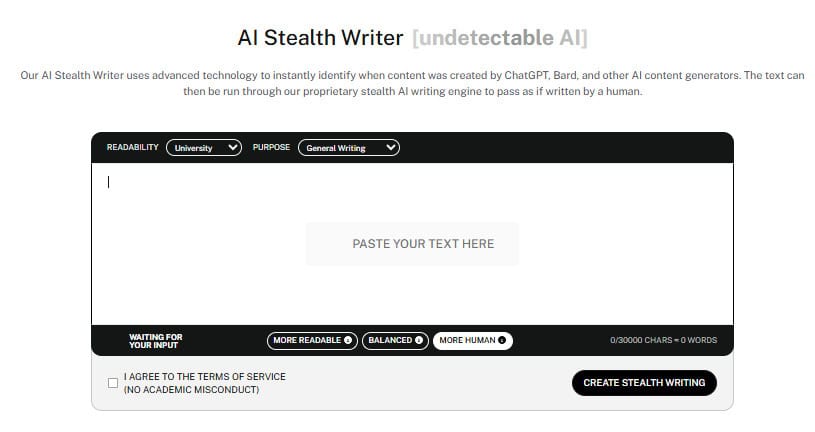AI agents are increasingly used in modern workplaces to aid decision-making, automate tasks, and optimize efficiency.
It involves various AI solutions, machine learning solutions, and natural learning processes to adapt to different environments.
This article will address the question: what are AI agents?
We’ve put together everything you need to know about how AI agents work so you can choose the correct application for your business model.
Find out more below!
What Is an AI Agent?
An AI agent is an automated software that can assist a workplace professional in performing various tasks.
It involves an artificial intelligence system relying on machine learning and Natural language processing to absorb information from its immediate environment and make decisions without human intervention.
Unlike most traditional computer software, AI agents don’t need a programmed set of rules or prompts to perform tasks and provide answers.


Never Worry About AI Detecting Your Texts Again. Undetectable AI Can Help You:
- Make your AI assisted writing appear human-like.
- Bypass all major AI detection tools with just one click.
- Use AI safely and confidently in school and work.
They have an advanced system where they can observe their circumstances and solve problems without intervention.
They’re incredibly versatile, and the essential component of an agent varies depending on the tasks they’re required to perform.
While humans may set goals, the AI agent decides on the right steps to take to achieve those goals.
Types of AI Agents
Let us explore the various AI agents examples to understand how AI agents operate and their applications in different circumstances.
Customer Agents
Customer agents help businesses engage with their user base, respond to inquiries, and aid customer service tasks 24/7.
This type of AI agent uses a natural learning processing system that enables them to communicate with clients in a conversational tone and offer seamless customer support. As a result, they’ve become an essential tool in modern customer service automation and are increasingly integrated with solutions like agentic CRM to manage interactions more intelligently.
For example, Volkswagen US collaborated with Google’s Gemini to launch its own AI virtual assistant for its MyVW app.
This solution can respond to drivers’ requests to use the vehicle and explain how to use features like indicator lights with a phone camera.
Hierarchical Agents
Hierarchical agents follow a defined structure across several levels, each focusing on a different task.
It involves a combination of multiple agents grouped into a hierarchy where low-level agents focus on specific tasks.
In contrast, the higher-level agents are more responsible for handling broad tasks.
This organization ensures that AI agents can handle tasks efficiently, no matter how complex.
For instance, hierarchical agents have proved helpful in manufacturing companies where low-level agents focus on individual machines.
In contrast, high-level agents handle tasks concerning the overall production flow. They analyze data to identify patterns to help improve production quality.
Utility-Based Agents
Utility-based agents are also called role-based agents because they analyze the desirability of potential outcomes before decision-making.
With this utility function, ai-agents can maximize their preference scale and evaluate solutions to determine the best possible outcome.
An example is financial institutions where portfolio managers evaluate investments based on different variables like return, diversification, and risk factors.
These utility-based agents can help analyze the data to find investment options yielding the most returns.
Reflex-Based Agents
There are two categories of reflex-based agents:
Simple reflex agents and Model-based reflex agents.
Simple reflex agents follow a predefined set of programs to respond to specific situations.
They do not consider past results or future actions and only work within the defined rules.
For instance, in hospitality businesses, simple reflex-based agents can automatically send confirmation messages when customers make a reservation.
Or in insurance companies, where agents immediately send acknowledgment emails in response to every claim submission.
Meanwhile, model-based agents adopt a more sophisticated decision-making process.
They develop an internal model of the environment and gather information by considering past actions to make decisions for the future.
An example is the supply chain industry; inventory trackers use model-based agents to monitor stock, adjust orders, and predict future demands.
They consider history and decide on the next moves by analyzing previous patterns.
Data Agents
Data agents offer users solutions for complex data processing and insights into data sets.
They perform several functions, such as data cleaning, analytics, and retrieving information from a massive database.
In finance organizations, data analysts use agents to process real-time stock market data, analyze patterns, and offer insights for future trades.
Employee Agents
Employee agents help organizations manage their HR and administrative tasks.
AI hiring agents help organizations manage their HR and administrative tasks.
They automate routine tasks and assist employees in managing their schedules, onboarding exercises, and daily workshops.
Also described as autonomous digital workers, they enhance employees’ productivity and efficiency.
Onboarding AI agents assist in training recruits through orientation exercises, paperwork, background checks, and other administrative functions, reducing the stress load on the HR staff.
It also helps to reduce the processing time for new employees and enhance efficiency.
Learning Agents
Learning agents are also considered predictive agents because they make decisions and improve their behavior based on previous performance.
They adjust their actions based on past situations and current trends to determine future events.
Typically, these learning agents use machine learning techniques to gain new insights and adapt their behaviors by reviewing past data.
For instance, in many e-commerce firms, learning agents organize product suggestions and display ads based on user preferences and interactions.
Another example is where a job search filter can predict options based on past selections, adapting to users’ needs.

How AI Agents Work
In case you’re still wondering, what are AI agents?
You need to learn how AI agents work to pick the right tool suitable to your needs.
The following explanation discusses the essential features of AI agents and their operational systems.
AI agents make use of function calls, which require users to input data into which involves inputting data into large language models including Google Gemini or Chat GPT- 4 to receive generated responses.
The function calling process includes several essential components.
- Assistant Message: This represents the LLM-generated output based on the user’s prompts and the system’s algorithm.
- User Message: The message contains instructions and prompts the user to expect AI to follow. Depending on the task, it may be a direct question or a description.
- System Message: The system message helps the LLM understand how to function. It interprets the task and defines the process the model should follow.
Real-World Applications of AI Agents
Through automation of tasks AI agents help to restructure industries and drive productivity and workflow efficiency.
AI agents crypto analysts review real-time data to analyze vast markets and identify the best trading opportunities.
They serve as risk reduction tools that enable traders to achieve maximum profits.
These tools also help to review and execute smart contracts, which facilitates compliance alongside reducing mistakes in blockchain transactions.
Besides AI agents’ crypto functions, they’re also valuable for retail and e-commerce.
They act as chatbots and virtual assistants handling customer queries and providing real-time support 24-7.
Benefits of Using AI Agents
AI agents bring business value across many industries through automation and aiding decision-making within organizations. To fully leverage AI agents, companies turn to software modernization services.
Here are some major benefits of applying AI agents in your workflow:
- Improved Customer Support: AI agents enable continuous customer support services by addressing all complaints that come in day and night. Businesses take advantage of these systems to manage standard queries and deliver swift solutions to customer complaints in real time. They provide customers with improved support services which leads to increased brand loyalty.
- Accurate Data Analysis: Many AI agents supplement analytical roles and help in data collection and processing. It provides actionable insights and information organizations use to implement their business strategies.
- Workflow Automation: AI agents assist organizations in improving operational efficiency. They help employees in handling routine tasks and scheduling appointments. With these agents, businesses can prioritize tasks and find the best strategies for organizing logistics and management plans.
- Software Development: AI code agents aid software development and offer suggestions for debugging and speeding up the software development process, showcasing the growing impact of AI in software testing to enhance code quality and efficiency
Challenges and Limitations
AI agents are gaining popularity in the market so brands now employ them to handle multiple operations.
However, using AI agents for business operations also brings several complications.
These challenges include:
- High-security Risks: AI agents pose risks of cyber attacks, data breaches, and a compromising decision-making process.
- Bias & Ethical Concerns: AI agents work by analyzing data to give suggestions on possible outcomes. Using biased data as a basis for decision-making results in ethical issues alongside discrimination against certain groups. For instance, the AI recruiting tool from Amazon received criticism because it showed discriminatory tendencies towards female candidates during the hiring process.
- Poor Data Quality: AI agents require an accurate and broad dataset to determine the most accurate predictions. Otherwise, poor data quality can lead to inefficient outcomes and affect the results. This can prove fatal, especially in finance institutions that rely significantly on analytical predictions.
- Limited Human Understanding: Though advanced, many AI agents still don’t fully grasp nuance in human expression. For instance, AI customer chatbots may not be able to interpret context in colloquial language, causing it to misinterpret customer queries and cause poor user experience.
AI Agents vs. Traditional Software
AI agents and traditional software differ in functionality, decision-making process, and flexibility.
Most traditional software follows a strict set of rules that the developers predefine.
Requirements such as frequent updates hinder its ability to adapt to new circumstances.
On the other hand, AI agents are designed to observe past actions and analyze data to make decisions for future outcomes.
They have machine-learning abilities and neural networks to process massive data sets, recognize patterns, and optimize workflow efficiency.
These AI agents possess the ability to work on their own due to their automated system without requiring human adjustments.
How to Build and Train AI Agents
Suppose you’re considering implementing AI agents in your business; you must find a process that works best for your business.
Our trusted Undetectable AI tech team has put together the following steps to follow to build and train AI agents.
- Step One: You need to define the agent’s purpose and environment. This involves predefining the possible situations that the agent will encounter in its operations. For instance, AI agents’ crypto trends include analyzing data and predicting patterns. By defining the required tasks, you can choose the techniques and models you need to build your system.
- Step Two: Select the right tech models. From machine learning models to natural language processing, AI agents are equipped with unique technologies to enhance performance in their operations.
- Step Three: You need to gather and organize your data at this stage. It is essential to use quality data such as business reports, user-generated data, and external datasets.
- Step Four: Supply the data and train the model using a machine learning algorithm. This way, you can determine how the agent receives data and train it to analyze patterns. It requires continuous monitoring and adjustments to process data and make decisions effectively.
- Step Five: It’s essential to rigorously test the AI agent to ensure it can perform its functions.
- Step Six: The final step is to deploy and monitor the AI agent. It involves implementing the agent into your work and existing systems. You must also follow the metrics and observe the accuracy and response times when performing tasks.
How to Use AI Agents in Your Workflow
Using AI agents in your daily routine can increase productivity and efficiency.
Here are the top Undetectable AI tools you can adopt to streamline your workflow.
- Smart Applier: This automates job search and reviews applications to suggest areas for improvement.

2. AI SEO Writer: This tool is excellent for assisting in writing and editing content optimized for SEO. It allows writers to delegate routine writing tasks and focus more on the creative process.

3. AI Chat: It is a conversational tool that immediately provides real-time solutions to user requests.

4. AI Stealth Writer: This tool allows you to generate human-like content. It is more advanced than regular models and can understand nuance and more complex meanings in human interactions.

Take a moment to explore our AI Detector and Humanizer in the widget below!
FAQs About AI Agents
Below, we’ve answered the top frequently asked questions about AI agents
Are AI Agents The Same As Chatbots?
No, AI agents are different from chatbots.
While the former can handle more complex tasks without intervention, chatbots rely on user inputs before generating an answer.
Can AI Agents Make Decisions On Their Own?
Yes, AI agents can make decisions independently without direct human influence.
What Skills Are Needed To Build AI Agents?
You will need a diverse skillset to build your own AI agent.
These include programming, machine learning, database modeling, and knowledge of intelligent user interfaces.
Conclusion
From client-support chatbots to real-time data-driven financial analysis, AI agents perform diverse tasks within a workplace.
Now that you’ve learned about the various applications in business organizations, you can adopt the right tool for your business model.
This allows you to remain competitive and stay ahead in an increasingly digital world.
